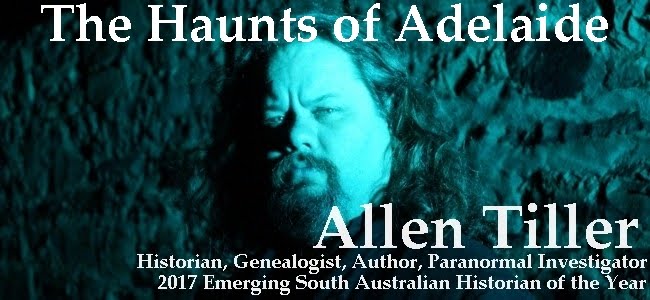Witchcraft in South Australia
Part II:
Witchcraft Laws Around the World.
Last blog I introduced a very brief history of witchcraft persecutions across the world. There is much more I could say, but this isn’t the blog to do so. This week, I am going to cover some of the laws pertaining to the practice of witchcraft across the world, many of which have been repealed, but others remain intact, some in countries you would not suspect!
Ye Olde witch, ‘malefici’ (male) or ‘maleficae’ (female) was thought to be a devil-worshipping practitioner, or in league with the devil to gain something for themselves. They were everyday people who were accused of witchcraft for political or social gain, or because they didn’t conform to someone else’s religious views, or sometimes it was purely for how they looked.
1542
In Britain and the English Isles, accusations of witchcraft were rife. In 1542, Henry VIII introduced the Witchcraft Act 1542 (33 Hen. VIII c.8) which was the first law to define witchcraft as a punishable felony. A witch found guilty could face a punishment of death or forfeiture of goods and chattels. It also removed the right to “benefit of clergy”, which was a legal device that anyone that could read a passage from the Bible, would be spared from death by hanging.
1563
Elizabeth 1 was next to make laws in England directed at witchcraft with the release of “Act against Conjurations, Enchantments and Witchcrafts. (5 Eliz. I c. 16).”
Within her new laws, Elizabeth 1 decreed that anyone who should "use, practice, or exercise any Witchcraft, Enchantment, Charm, or Sorcery, whereby any person shall happen to be killed or destroyed" would forego the benefit of clergy and be put to death.
However, for lesser charges of witchcraft, where a person, wasn’t not seriously hurt or killed, imprisonment was the preferred option.
The same year the Scottish Witchcraft Act was set in place. This act established that both the practice of witchcraft and consulting witches were felonious offences punishable by death. It did not clearly define what witchcraft was, nor how to identify a witch. (Moir, 2014)
1604
James I was next to add witchcraft laws with; “An Act Against Conjuration, Witchcraft and dealing with evil and wicked spirits”. James' I, act broaden the scope of the act that anyone who practised
1649
The Scottish Witchcraft Act of 1649 expanded on some aspects of the previous, Witchcraft Act of 1563, by passing laws to enforce acts of godliness. It now became illegal to worship false idols, be guilty of blasphemy and cursing parents. It also enabled a new clause that allowed the death penalty for consulting with witches, devils or “familiar spirits”.
1735
With the passing of The Witchcraft Act of 1735 (9 Geo. 2 c. 5), previous acts in England and Scotland were repealed and replaced under one Act. The new act took away the death penalty for guilty parties, and instead enforced fines and imprisonment.
The scope of “witchcraft” was broadened to become more inclined to represent those who claimed to be psychic. Any person who claimed to be able to tell the future, convene or talk with spirits, cast spells or various other acts could be arrested, fined and imprisoned.
This is the act under which Helen Duncan was found guilty of witchcraft in 1944.
The act remained current until 1951 when it was replaced with the Fraudulent Mediums Act of 1951.
The Fraudulent Mediums Act of 1951 was repealed in 2008 and replaced by consumer protection regulations.
South Africa still enforces The Witchcraft Suppression Act, 1957, which was based on the Witchcraft Act of 1753. (Juta and Company, Ltd., 2005.)
This act states items such as Causing disease or injury to another person or thing, by supernatural means, indicating one is a wizard, or professing to use supernatural powers, witchcraft, sorcery, enchantment or conjuration shall be liable for a conviction can be imprisoned for 20 years.
Any person who employs a witchdoctor, witch-finder or professes to be a wizard can be fined five hundred Rand or imprisoned for a maximum of 5 years, or both.
Anyone who pretends to use any supernatural power, witchcraft, sorcery, enchantment or conjuration, or undertakes to tell fortunes, or pretends from his skill in or knowledge of any occult science to discover where and in what manner anything supposed to have been stolen or lost may be found guilty and face a fine of two hundred Rand or two years imprisonment.
The South African Act was then Amended in 1970 to repeal the 3rd act of the to now read;
“To amend the Witchcraft Suppression Act, 1957, so as to make it an offence for a person who pretends to exercise supernatural powers, to impute the cause of certain occurrences to another person; and to provide for incidental matters.”
The South African witchcraft act is still enforceable to this day.
Next week we will explore current Australian laws regarding witchcraft.
Researched and written by Allen Tiller © 2018
https://www.facebook.com/TheHauntsOfAdelaide/
References
Goodare, Julian. “The Scottish Witchcraft Act.” In Church History, 39-67. Cambridge: Cambridge University Press, 2005.
Rosen, Barbara & Rosen, Barbara, 1929- 1969, Witchcraft, Edward Arnold, London
UK.Gov, 2018, Act against Conjurations, Enchantments and Witchcrafts. (5 Eliz. I c. 16), The National Archives, Gov. UK viewed 9 April 2018, http://discovery.nationalarchives.gov.uk/details/r/8c14488f-6e52-41bb-bab9-23f2ca3bb07c






